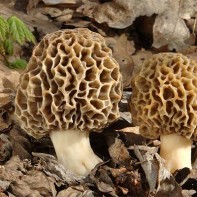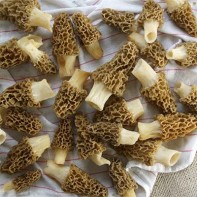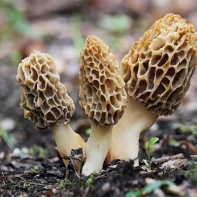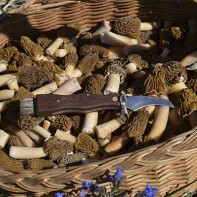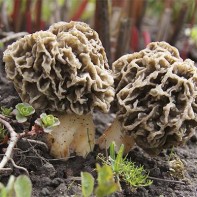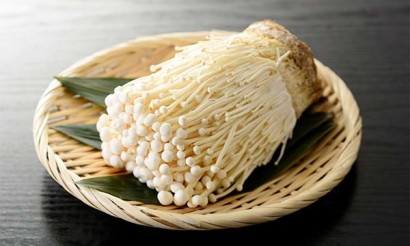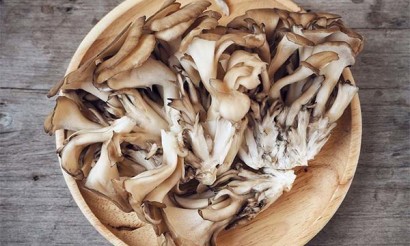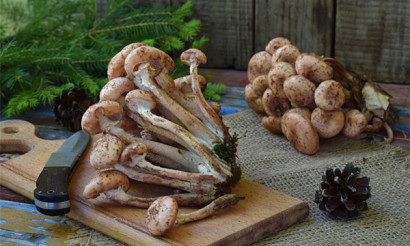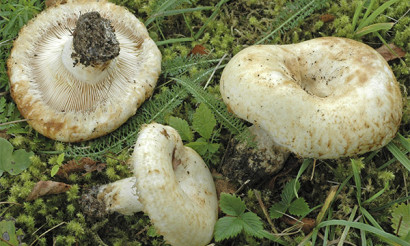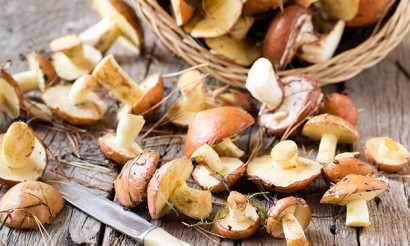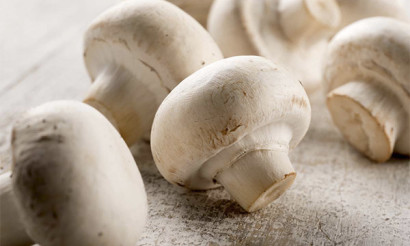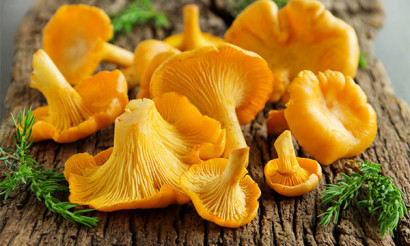Mushroom: photo, description, useful properties and contraindications
Early spring mushroom is very porous, absorbs as a sponge useful and toxic substances. The mushroom is considered conditionally edible, as it requires careful heat treatment before being eaten.
- Morel mushroom: how they look, where they grow and when to pick
- How they look
- Where does it grow
- Types
- When to pick
- What does it taste like?
- What is the difference between morels and shingles
- Composition and calories
- How useful are morels mushrooms for the human body
- The use of mushrooms in folk medicine
- Harm and contraindications
- Where to buy and how much they cost
- How to prepare morels for cooking
- What can be cooked from morels: Recipes
- Soup
- Mushroom cutlets
- Pasta with morels
- Morels in Sour Cream Sauce
- How to preserve morels for winter
- Dried morels
- Frozen morels
- Pickled Morels
- Can Morels be Grown at Home
- First Aid in case of Mushroom Poisoning
Morels mushroom: how they look like, where they grow and when to pick them
The morel (Morchella) belongs to the family Morel family of the class Pecicomycetes. A poorly studied genus, it is a complex with no clear species boundaries. The known species are not completely independent. Some of them are subspecies or different names of the same species.
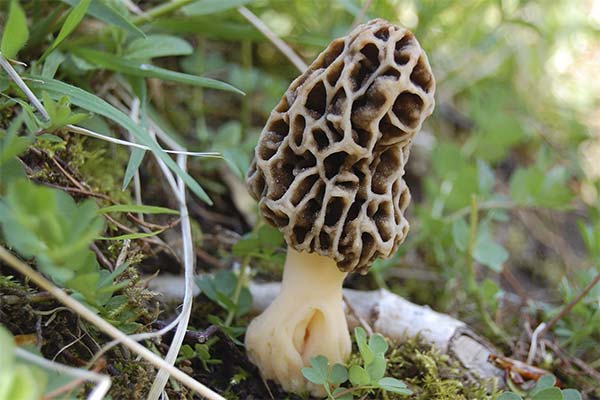
What do they look like
Massively fruiting typical representative of the genus Morelus real grows up to 15 cm. The fruiting body consists of a fused cap and stalk, which stand out visually.
The ovoid or rounded-spherical cap is uneven, roughly cellular. It is colored gray, various shades of brown, sometimes orange. Ribs of cells formed by crinkles, grooves, lighter than the general background.
Stalk, fused edges with the cap - white-yellow, emarginate, extended to the fungus. The mushroom's pleasant-smelling flesh is thin, brittle, and waxy.
Where does it grow
The mushroom grows in the temperate zone of the Northern Hemisphere, it is common in European forests, in the United States, Australia. In Russia and the CIS countries it is distributed evenly, except for the areas of the Far North.
Morels prefer damp, calcareous, sandy soils:
- deciduous and mixed forests;
- old fires;
- clearings;
- glades, glades;
- edges of fields;
- foothills; foothills of mountains;
- parks, gardens, vegetable gardens.
Fungi form a symbiosis with the roots of higher plants - ash, birch, aspen.
Species
The most popular types of morels:
Conical
The mushroom's elongated conical cap is 3-9 cm high, 3 cm in diameter and grows tightly against the stalk. The surface of the hollow cap is cellular-rubbed with dark septa that stand out against the yellow-brown background.
The velvety cylindrical hollow stem tapers or expands toward the ground. The color is white to hazel, the surface is covered with longitudinal grooves.
Grows singly or in families on sandy and marshy soils, forest edges, openings, coniferous, mixed and flood-plain forests.
Edible
A large, pleasant-tasting member of the morel family has a fleshy, hollow fruiting body. The egg-shaped or globular cap is 3-8 cm in diameter and up to 7 cm high, yellow or brown in color. The surface is wrinkled, with a honeycomb-like cell structure.
The hollow 7-cm stalk darkens with time and becomes floury. Conical morels are common in forest fires and marginal areas with humus soils.
Tall
The high morels differ from the conical ones in their large size and dark color. The olive-brown cap, covered with triangular cells, is 10 cm in height. The top of the cylindrical, granular stalk, up to 15 cm high, is almost equal to the diameter of the cap (3-5 cm).
The mushroom belongs to the rare species of morels. Sometimes found in forests, more often in the open countryside, on edges, glades, in gardens and vegetable gardens.
Semi free .
Cap 3 cm in diameter descends in a cone along the white (cream) stalk for 4 cm and not attached to the ends. The surface is mottled with sinuous vertical grooves and transverse ribs blackening over time. Cap color varies from olive to dark brown.
Occurs in birch and aspen forests, oak groves, city parks and gardens. Widespread along the beds of rivers and streams.
Mushroom cap
The name of the mushroom comes from the shape of the cap, which resembles a wrinkled, vertically-folded cap that is attached to the stem only by its upper part. The cap is up to 5 cm high and up to 4 cm wide, changing color with age from chocolate to ochre-yellow.
The white scale-like stalk, 7-10 cm high, is more often curved and flattened from the sides. The pleasant smelling flesh is thin and brittle.
The mackerel grows in clumps on depleted waterlogged soils.
Steppe
A rare delicacy, the morel mushroom resembles a white mushroom in taste. The fruiting body reaches a quarter of a meter in height and 2 kg in weight. Most of the body is occupied by a grayish-brown cap in the shape of a ball covered with narrow cells.
The short two-centimeter stem, in contrast to the hollow cap, has only small cavities.
The species belongs to the steppes and forest-steppes of southern arid regions.
Thick-footed
The species owes its name to its thickened emarginate stalk, which grows 30 cm in height.
The oval or cone-shaped cap is yellowish or brown in color. Representatives of the species are found in forests with broadleaved trees.
Spongy
A hollow fungus found on sea shores (dunes), it grows no taller than 10 cm. It differs from other species by its spherical cap with large, deep, circular-shaped cells.
Delicacy
The height of the fruiting body does not exceed 15 cm. The mackerel is similar in appearance to the conical. It is distinguished by its larger, vertically elongated cells and pale color - gray with a greenish or brown hue. The species got its name for its excellent taste.
When to pick
Early spring mushrooms appear just after the snow melts. In southern and central regions, harvesting begins in late March, April, and ends in June, sometimes in the first half of July. In northern regions, some species form fruiting bodies only in May.
If the fall is warm, the second fruit-bearing period begins, which falls in September and the first half of October.
What it tastes like
Fans of quiet hunting, who do not miss the collection of the earliest mushrooms, say that their taste is for a fan. For some, the product seems tasty, while others categorically reject it.
The pulp of morels does not have a pronounced mushroom smell. It is pleasant, spicy with a nutty, earthy aftertaste. Particularly excellent gastronomic qualities have morels delicacy, steppe.
What is the difference between morels and shrews?
The two types of representatives of the mushroom kingdom have differences in appearance and consumer properties.
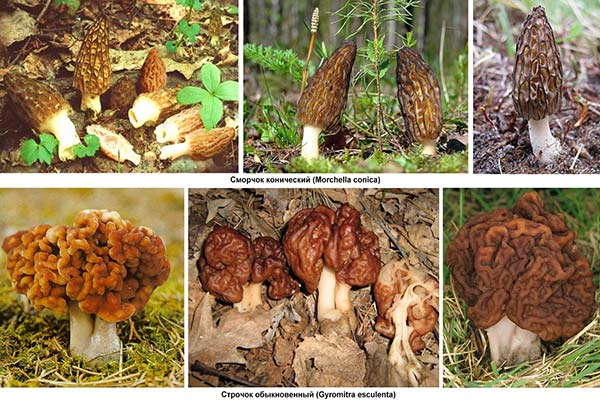
At the top - morels. At the bottom - grosbeaks.
Unlike edible morels, morels contain the poison hyromitrin, which is difficult to destroy even with prolonged heat treatment.
The cone-shaped, shapeless cap of the deadly species looks like a turban worn on a swollen short stalk sunk in the forest floor. Whereas the morel, this part of the fruiting body resembles a bee's honeycomb, the stinger's hat resembles the kernel of a walnut or the brain of a walnut. In edible species, the cap is ochre-yellow, gray or brown, while in poisonous species it is often dark (brown, brown-red or brown).
Representatives of different species can be distinguished from each other by their stalks. In the morel, it is hollow, in the stinger it is filled with septa.
Composition and calories
In 100 g of low-calorie product contains half of the daily norm of cobalamin, more than 60% of iron, copper.
In addition, the composition of the mushroom contains:
- PP, B vitamins (especially a lot of riboflavin, pyridoxine, pantothenic acid);
- micronutrients - manganese, zinc, selenium;
- macronutrients - phosphorus, potassium, magnesium, calcium, sulfur, sodium;
- saturated and unsaturated (Omega-6, 9) fatty acids;
- dietary fiber;
- natural sugars;
- campesterol.
The energetic value of 100 grams of the product is 31 kcal. GI - 3.1, 0.6, 2.3 g, respectively.
What are the health benefits of morels for the human body?
Useful actions of the representatives of the genus morels
- Mineralize bones, teeth;
- Strengthen the eye muscles;
- Increase hemoglobin levels;
- Improve carbohydrate, lipid metabolism;
- Participate in hematopoiesis, normalize blood flow;
- Accelerate absorption, assimilation of nutrients;
- strengthen the immune system;
- support the work of the vestibular apparatus;
- bind, remove toxins;
- Prevent the development of fetal malformations in pregnant women:
- stimulate lactation;
- Accelerate the healing of injuries of muscle, cartilage tissue;
- normalize blood pressure;
- regulate water-salt, acid-base balance;
- activate the synthesis of insulin;
- Increase elasticity of joints.
Antioxidants in mushrooms bind, remove free radicals, prevent the formation of malignant tumors, support the heart, liver, prolong youth.
The use of mushrooms in folk medicine
In folk medicine, antioxidant, diuretic, antiviral, anti-inflammatory actions of the morel are known and applied in practice.
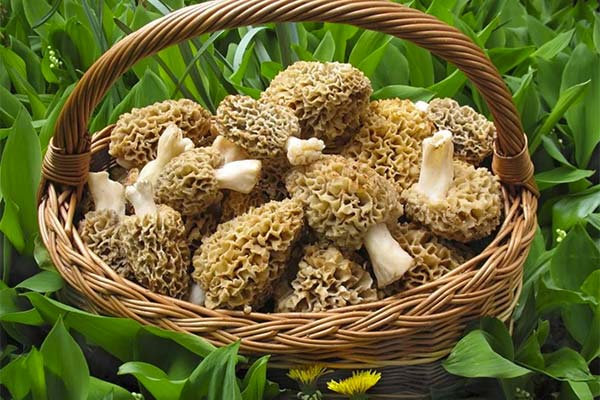
How to use:
To treat myopia, hyperopia, cataracts
Dry 150 grams of mushrooms, grind into powder, pour a glass of vodka. Keep the tincture in a dark cool place for 14 days.
Take the drug for 30 days in the morning and in the evening after a meal in the amount of teaspoonfuls. For a greater effect, wash down the tincture with sour juice, morsels.
For joint ailments.
Combine, mix a handful each of flowers of willow, honeysuckle, rosemary. Add to them 100 grams of morels (fresh), beating in a blender. Pour 600 ml of vodka. After 2 weeks, the tincture, relieving inflammation, pain, rub into the painful joints.
For the treatment of chronic thyroid disease (thyroiditis)
To prepare a tincture, you will need 150 g of fresh, 50 g of dried mushrooms, 500 ml of vodka. Until the condition improves, take the remedy on an empty stomach 5 ml.
To improve lactation, digestion, treatment of intestinal disorders
Mushrooms soak in salted water, boil for 30 minutes in a large volume of liquid. Mushrooms (20 g) grind, pour a glass of water. Soak on low heat for half an hour. Decoction, infused for at least five hours, take before eating 4 times a day for 50 ml.
Harm and Contraindications
The product is contraindicated for use in the presence of:
- pancreatitis;
- Individual intolerance to the product;
- allergies;
- Inadequate blood clotting;
- Peptic ulcer, duodenal ulcer;
- gastritis;
- duodenitis;
- pyelonephritis;
- hepatitis, cirrhosis of the liver.
The harm to the body of morels is caused by insufficient heat treatment. Poisons contained in the mushrooms cause severe food poisoning.
Where to buy and how much they cost
Morels are sold through food depots, markets, large chain stores and online sites by individuals, farms, large agro factories.
The average price of fresh mushrooms - 500 p. per 1 kg, dried - 1000-2000 p.
How to prepare morels for cooking
To protect yourself from food poisoning, you need to prepare in advance:
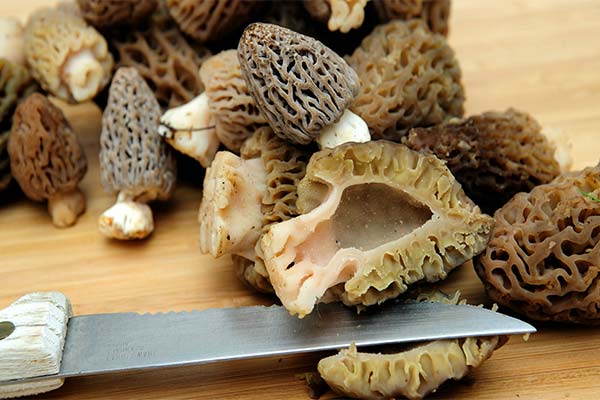
- Sort through the morels, remove the forest debris. Cull the crumbled and rotten specimens. Wash away sand, soil.
- Soak the mushrooms in cold, salted water and put them cap-side down. After 30 minutes, drain the brine, rinse the product.
- Pour soaked morels in water. Bring to a boil, add salt, and simmer for 10 minutes.
- Change the water. Boil again for another quarter of an hour.
- Rinse the mushrooms in a colander, rinse thoroughly under running water.
When picking, put only young mushrooms with white stems in the basket, as old ones accumulate a lot of toxins. They are difficult to neutralize, even with prolonged heat treatment.
What can be cooked from morels: recipes
From morels cook delicious soups, make cutlets, julienne. The product is stewed in sour cream sauce, fried, baked in the oven under cheese with potatoes, pickled.
Mushrooms flavor sauces for meat, fish. Pasta and risotto are prepared with them. Baked goods with morels such as pies, kulebyaki, pies are especially flavorful.
Soup
To make 4 portions of fragrant mushroom soup you will need:
- 300 g morels;
- 60g of butter;
- 100 ml of sherry;
- 700 ml of chicken broth;
- 100 g cheese;
- 4 onions;
- 2 tbsp. sugar;
- 100 g white bread;
- salt;
- ground cloves, nutmeg.
How to cook:
- Pour 250 ml of water over the prepared, coarsely sliced mushrooms. Add cloves, salt, boil for 5 minutes over low heat.
- Peel and slice onion into half rings. Saute in sauté pan in oil. Pour in sugar, cook for 10 minutes.
- Pour in the sherry and simmer until the wine aroma has disappeared.
- Add 700 ml of chicken stock and simmer over low heat.
- After half an hour, pour the broth with the morels, salt, and nutmeg. Bring to a boil, remove the container from the stove.
Roast slices of white bread in butter. Cut the croutons into rounds. Sprinkle each one with grated cheese, put it in an oven heated to 180 degrees for 5 minutes. Serve the soup with the croutons.
Mushroom Cutlets
Nourishing original cutlets can feed the family, serving the dish for lunch or dinner.
Ingredients:
- 250 g morels;
- 50 g sour cream;
- 400g loaf;
- 2 eggs;
- breadcrumbs;
- salt;
- butter, milk to taste.
How to prepare:
- Rinse the mushrooms, soak for half an hour in salted water. Cut into pieces, boil for a quarter of an hour, rinse thoroughly in running water.
- Soak the loaf in milk. When softened, squeeze, pass with morels through a meat grinder.
- Peel onions, chop them in small cubes. Fry until golden brown, add to stuffing.
- Beat egg, salt, knead.
- Beat second egg in a bowl with a fork. In another bowl pour breadcrumbs.
- Form cutlets. Dip each one firstly in egg, then roll in breadcrumbs.
- Place the croquettes in a hot pan with vegetable oil. Fry until both sides are done.
Serve mushroom cutlets with sour cream, mashed potatoes, fresh vegetable salad.
Pasta with morels
To cook an Italian dish with Russian morels, prepare:
- 300 g of mushrooms;
- 300 g of noodles;
- A cup of cream;
- 2 tablespoons each of soy sauce and tomato sauce;
- 80 ml of olive oil, white wine;
- 1 onion;
- salt, paprika.
Cooking steps:
- Place a pot of water on the stove. When it boils, pour the noodles.
- Remove the husks from the onion, cut into cubes, fry in oil.
- Add washed, soaked and boiled mushrooms to the pan.
- After 5 minutes, pour in wine. When it has evaporated, add cream, sauces, and seasonings. Cook over low heat for 10 minutes.
- Toss the ready noodles in a colander, then serve in portions on plates. Pour sauce with morels.
This delicious dish takes only 20 minutes.
Morels in sour cream sauce
Roasted mushrooms in sour cream have a delicate flavor, a subtle aroma.
The set of products for 2 servings:
- 1 kg of morels;
- 150 grams of sour cream;
- onion;
- vegetable oil, butter;
- salt, ground pepper.
Cooking algorithm:
- Sauté the chopped onion in vegetable oil, put it in a plate. Add butter to the frying pan, fry the mushrooms, prepared (washing, soaking, boiling).
- Add to the morels fried onions, thick sour cream.
- Season with salt and pepper. Braise under a lid for 5 minutes.
Serve as a dish by itself or with pasta, potatoes, vegetables.
How to cook morels for winter
If you gathered a lot of mushrooms in the nearby forest, they can enjoy them all winter. Prepare the product in three ways - freeze, dry or pickle.
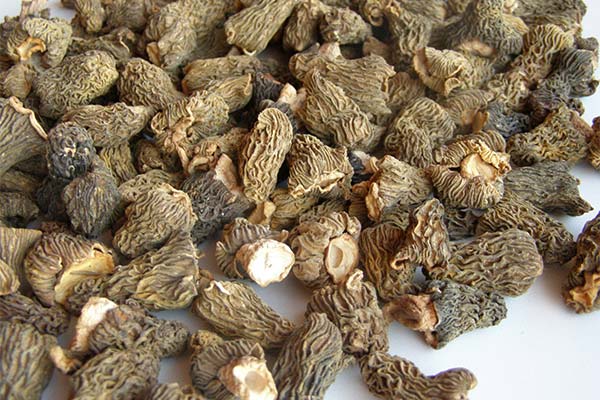
Dried morels
After the moisture evaporates, the fragile fruit bodies become denser, with them it is easier to create culinary masterpieces with exquisite flavor.
How to Dry:
- Sort the mushrooms, put aside the small specimens. They are not suitable for drying. Separate the legs (you will only need the caps).
- Rinse quickly and drain on paper towels.
- Cut into slices.
- Line a baking tray with parchment. Place chopped caps in it.
- Dry in an oven with the door ajar or fan on at 50°C for 3 hours.
- Set the t - 70 degrees, continue drying until ready.
Store the preserves in a canvas bag or tightly closed glass jar.
Frozen morels
Clean the fresh mushrooms, rinse them, soak them in cold water for 2 hours. Boil for a quarter of an hour, change the water, repeat the heat treatment procedure.
Toss the morels in a colander. When the liquid drains out, place them on clean kitchen towels to get rid of any excess moisture.
Spread the mushrooms into bags, squeeze out the air, tie, and send to the freezer. You can use food containers or freeze the morels on a cutting board for 5 hours, transfer them to bags for further storage.
Pickled morels.
To pickle 1 kg of morels deliciously, you'll need:
- 6 bay leaves;
- 30 peas of black pepper;
- 5 g salt;
- 3 tbsp. of 6% vinegar;
- One-third teaspoon of citric acid;
- if desired - cinnamon, cloves.
Preparation:
- Clean the mushrooms from the debris, sort through, and rinse. Soak for an hour in salted water. Boil in 2 steps for 15 minutes, changing water and washing.
- Prepare the marinade. Add spices and seasonings to 500 ml of water.
- Cook for half an hour, cool, add vinegar.
- In clean jars, place mushrooms, pour marinade. Screw the lids on.
Store in a cool, dark place.
Can morels be grown at home
If the house or apartment has windows facing north or west, you can grow morels on a windowsill:
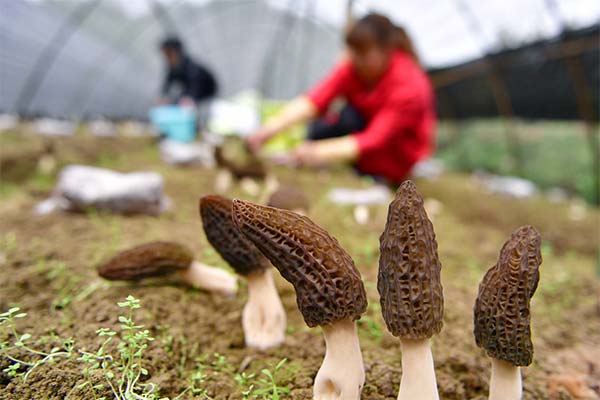
- Fill a box or large pot with a soil mixture consisting of peat, gypsum, birch or oak sawdust, wood ash.
- Spread store-bought mycelium over the surface. Sprinkle soil from the broadleaf forest.
- Water with warm water.
- Sprouts will appear in 2 weeks, if you do not allow the substrate to dry out.
Important! Planting can not fertilize with organics, allow direct sunlight, water with chlorinated water directly from the tap.
A more reliable way to grow mushrooms is on a plot of land:
- In the spring or summer, choose a shaded spot under a broadleaf tree.
- Remove the top layer of soil. On the vacated place a 10 cm layer of specially prepared substrate.
- Water (10 liters per 1 sq. m.). Sprinkle mycelium on top. Cover with removed soil, moisten the soil again. Cover with tree leaves.
- Do not allow the soil to dry out, feed with wood ash.
- For the winter, insulate the plantings with leaves, straw, press with branches.
- In the spring after the snow has melted, remove the cover.
Sprouts will appear in 2-3 weeks. The mushroom will bear fruit for up to 5 years.
First aid for mushroom poisoning
Symptoms of mushroom poisoning begins 1-1.5 hours after eating. They are manifested by abdominal cramps, headaches, fever, nausea and vomiting, diarrhea.
Severe intoxication causes drowsiness, impaired cardiac and respiratory functions, increased sweating and salivation.
If mushroom poisoning is suspected, an ambulance is called. While the team reaches the patient, he is given first aid:
- Provide bed rest.
- Give plenty of fluids - mineral water, chilled green tea.
- If there is no vomiting, they induce it artificially. After drinking 1-1.5 liters of water, you need to put pressure on the root of the tongue with your fingers.
- In the absence of diarrhea do an enema.
- For the quickest elimination of toxins the victim is offered to take absorbents - activated charcoal, Polysorb, Enterosgel, Smecta.
- In dehydration need Rehydron or other saline solutions.
Timely first aid shortens the recovery period to 2-3 days. Treatment of severe intoxication can take up to a month. Doctors advise not to get rid of the remaining mushrooms. To clarify the cause of poisoning, the product will be sent for testing in the laboratory.
The popular object of silent hunting reveals its exquisite taste, has useful, therapeutic effects, if it is correctly identified and prepared. Morschok necessarily subjected to soaking, a long heat treatment, ridding the product of toxic substances.
«Important: All information on this site is provided for informational purposes only. purposes only. Before using any recommendations, you should consult with a health care professional. please consult a health care professional before using any of the recommendations. Neither the editors nor the authors shall be liable for any possible harm caused by materials."

